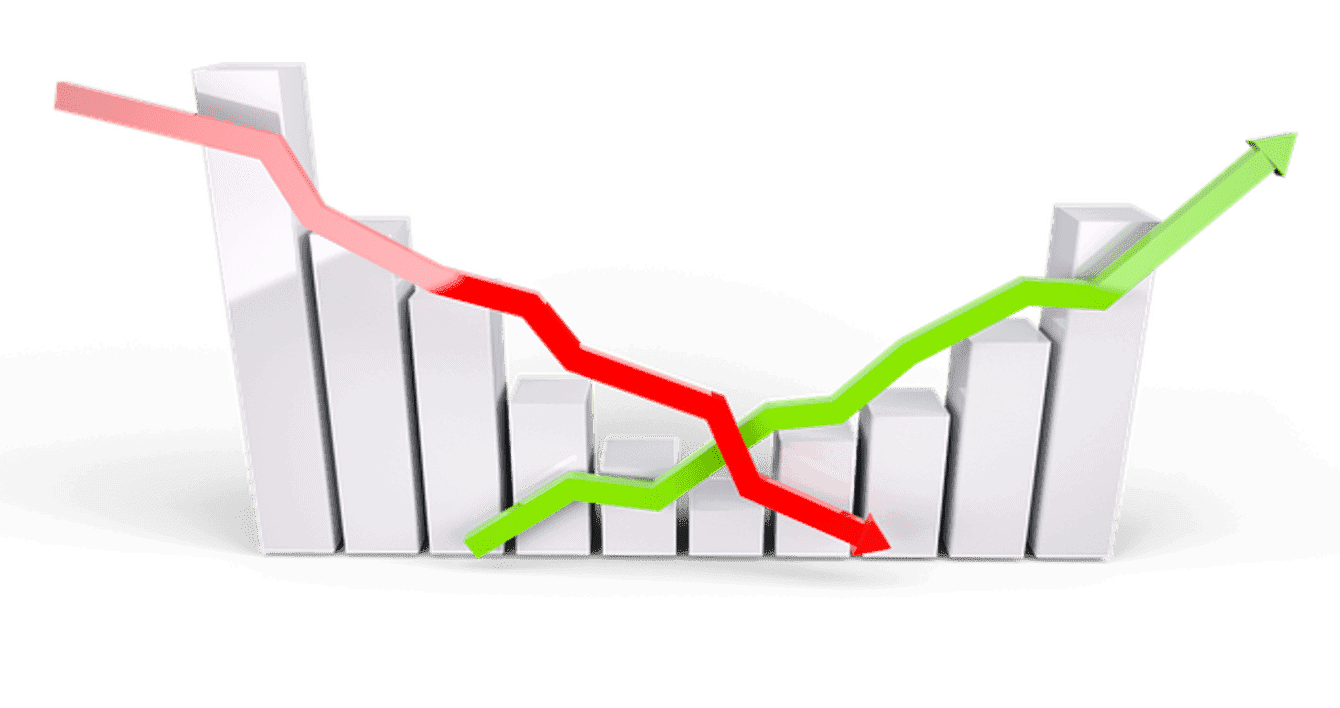Understanding the bull and bear market

Do you know what a bear market and a bull market are? What would you say to me if I told you that the bull and the bear were involved in all this? If you are new to the world of trading, understanding what is a bull market and a bear market will be your ally to get back on the right foot in the financial markets. If you want to know more about bull and bear markets before investing, if you want to know the characteristics and seek advice for investing in each of them, you have come to the right place.
Understand the main differences between bull and bear markets is a core function of our investment portfolio. By knowing each of the main characteristics of the market, we can also create an appropriate risk management strategy.
Bullish or bearish trends change market conditions and have a strong influence on traders' emotions. These last years, Cryptocurrency has oscillated between bear and bull markets as traders change and adapt their strategies according to the global trend.

Get 200% Bonus after your first deposit. Use this promo code: argent2035
How does a market evolve?
Before we get into the details of the terms bear market and bull market, we need to define what a market trend is. A market trend is a tilt in which a market moves in a particular direction over a period of time.
In other words, it is the direction of a product, service or brand. Like anything, every market trend has a beginning and an end and they are always moving, they will never stand still.
It should be clarified that the sales in the market trend are those that will mark how positive or negative the behavior of the supply is and those that will allow us to analyze the trend.
What is an uptrend and a downtrend? Well, these are the two types of trends that we can find:
Uptrend: that is to say when the movement continues upwards creating a succession of rising highs and lows.
Downtrend: that is, when the movement extends downward, showing higher highs and lower lows.
The bear market
It is often said that a market turns bearish after a correction or decline of more than 20% from the last high reached. And one of the most used tools to detect when a market has turned bearish is the 200-day simple moving average.
In general, the average of 200 sessions is taken as it is considered an approximate number of trading sessions over an entire year. Thus, we would speak of bear markets when the price is below the approximate average of the last year.
Taking this fact into account, it is clearly seen that most of the time the price is above the simple average of the 200 periods, as this graph of the Dow Jones shows over the very long period from 1896 to 2018: the 65% stock market index traded above its 200-day moving average.
Stock indices (and the actions that shape them) spend much more time going up than down. This already gives us a first perspective of great importance: if our trading is not limited to scalping (the fastest trading modality).
But is more about opening positions and keeping them open for a bit longer, I have to keep in mind that short or bearish positions should generally have a shorter duration than long or bullish positions. In a short position, time is particularly against me: I have to know that a bearish movement is generally much shorter than an upward movement.
Another thing to keep in mind if I'm "court“is that there is a clear risk of strong bullish rallies. This is something very typical of market crashes: the rebounds that appear, and which involve sharp and sudden rises, are usually very strong. This is due, among other things, to the closing of short positions that occurs after the market correction, which in English is known as “short squeeze".
How to identify the bear market?
A bear market is a market that has a sustained downward trajectory over time and where investors are not very optimistic about going up. This type of market is also known as a bear market.
In a bear market, negative sentiment grips investors and the downtrend only gets worse, due to the general pessimism surrounding the market. When the opposite happens and optimism prevails, driving the market higher and higher, we call it a bull market.
There is a frequent debate among analysts and investors about how sustained and dramatic a market decline must be for it to be considered a bear market.
These types of conditions are not the only ones for which a market can fall. Fixes are shorter drops that usually last less than twice, and crashes are sudden drops that can lead to very negative results.
Characteristics of the bear market
Now that you know the meaning of the bear market, let's look at some characteristics of the bear market:
- Bear markets are a type of market where there is a increase in supply and decrease in demand, that is, there are more people who intend to sell than to buy.
- Because of lack of buyers, the issued shares begin to fall, reaching very high prices, forcing investors to sell these shares quickly to try to make a profit.
- mistrust and pessimism that the market eventually generates make investors afraid of losing all their money, so they quickly sell their stocks.
- A bear market is often associated with a economy going through a bad situation financial, in which companies do not make enough profit because consumers do not spend what they need to survive.
How long does a bear market last?
The reality is that you can't tell exactly how long a bear market lasts. They generally have a shorter time frame than bulls. Throughout history, we have witnessed this type of market.
An example of a bear market that can be cited is the Wall Street stock market crash of 1929, a crisis that was called " The great Depression ". However, it is not possible to determine the exact time gap, but it is possible to do market analysis and study the probabilities of a bear market starting or ending.
How to invest in a bear market?
Due to the characteristics we have named a bear market, it probably seems like a bad idea to invest in this type of market. However, this can present itself as a great financial opportunity, as assets can be purchased at lower prices in order to earn a good return in the future.
Here are some tips for investing in a bear market:
1. Always have an emergency fund available
Remember that bear markets are usually linked to economic crises, so if your income is reduced, you can calm yourself down by reducing the possibility of selling assets.
2. Keep long-term investments in mind
Do not focus on short and medium term investments. History has shown that in the long term, investments always increase. Also keep in mind that bear markets generally last for less time than bull markets.
3. Make an investment plan and stick to it
If you have a well-structured plan, fear before low numbers will be better. Do not stop investing in this situation, because the days of greatest profitability in the markets occur during the most bearish phases.
4. Don't get carried away by the noise of the market
Keep in mind that before economic crises, the media tends to be more yellowish and publish alarming headlines. Try to ignore them and stick to your plan.

Get 200% Bonus after your first deposit. Use this official Promo code: argent2035
5. Only sell if it's vitally important
In these cases, it is a mistake to sell. Perhaps by the time you think about it, you are already in a new bull market period. By selling in a bear market, you will only be able to materialize your losses.
The bull market
When we talk about a bull market, we are referring to a common situation. Moreover, in addition to being a joint situation, it occurs in the medium or long term. It is therefore generally a situation that lasts several years.
Article to read : From traditional banks to cryptocurrencies
Now, it makes sense to ask: what happens in this common situation that usually lasts or can last for several years? What happens is that most financial assets gradually increase.
To make the concept easier to understand, we will break down the definition by points:
- It is a stock market situation since it occurs on financial markets in general or what is commonly called the stock market.
- This is the majority of financial assets, since it is a joint phenomenon in which the majority of values move in one direction.
- The direction they are taking is bullish. When we talk about bulls, we say that they are going up, that they are increasing their price. For example, when a stock goes up, it moves higher. And, in addition, when it rises for a long time, it is said to be in an uptrend.
Characteristics of a bull market
Throughout history, there have been many bull markets. The stock market is cyclical so there are phases of prolonged increases (bull markets) and phases of continuous declines (bear markets). From this, we can extract the details that characterize a bull market:
- Most assets are in an uptrend.
- This usually goes hand in hand with a good economic situation in which the gross domestic product (GDP) increases and unemployment decreases.
- It is part of the stock market cycle. But at the same time, within the bull market, there are different sub-phases.
- Bull markets tend to last longer than bear markets.
- Also, in addition to being longer, they tend to be less volatile. That is, there are no such abrupt swings as in bear markets.
However, the above should not lead us to believe that all financial assets are moving higher. There are stocks that go down in bull markets, and we should always keep that in mind. The market is contagious and we will see a lot of assets go up when we are in a bull market, but you have to be careful.
Article to read: How to find a supplier for your online store?
It's also worth noting that a bull market can occur in different geographies and different sets of assets. Thus, we could speak of a bull market for bonds, equities or commodities. Even if it is true, everything is said, that when we speak of a bullish or bearish market, we generally refer to the stock market.
How to invest in a bull market?
Unlike the bear market, investing in the bull market always generates spectacular returns in the short term. Therefore, we will leave you a note with advice that will be useful to you:
- The right time to prepare for a bull market is when prices continue to fall in the bear market. This is why it is important to do market research.
- In the beginning, when prices start to rise, buy lots of stocks, preferably those that fell the most during the bear market.
- As the bull market is characterized by gains, focus your attention on high quality stocks and minimize the declines to make room for others that are better.


















Leave comments